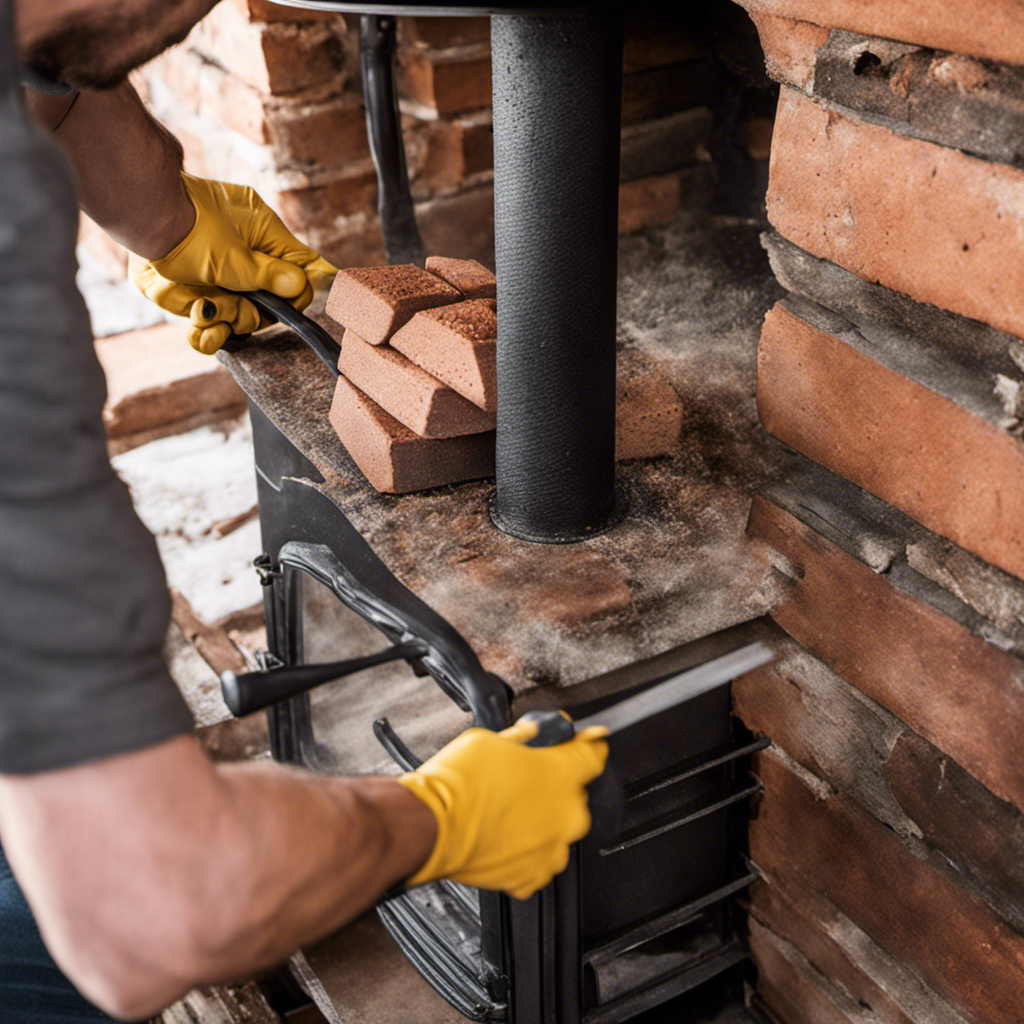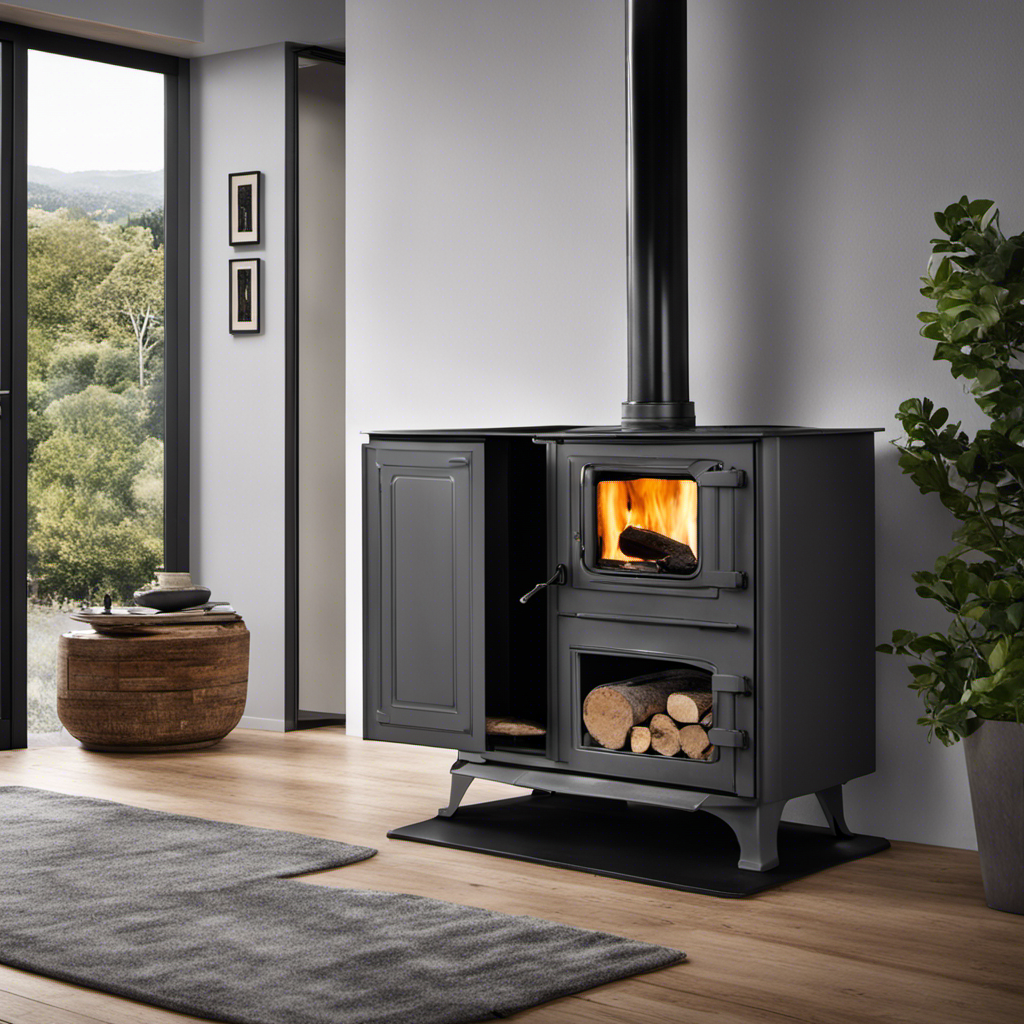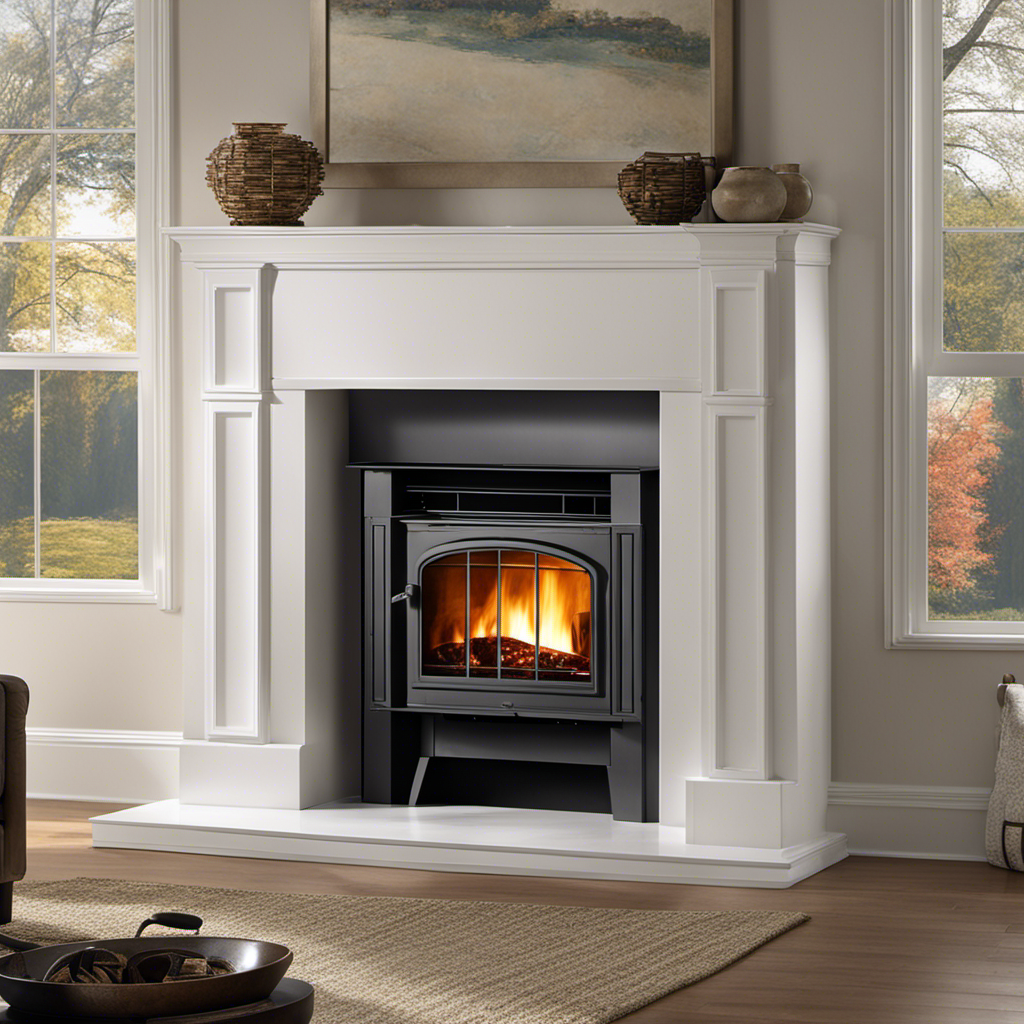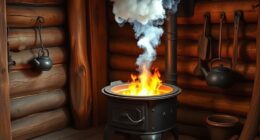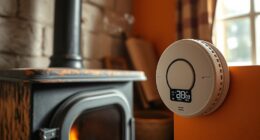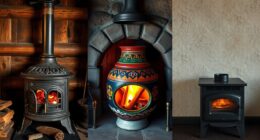As an owner of a wood stove, I understand the significance of adequately maintaining the firebrick. This element is crucial for safeguarding the interior of the stove and guaranteeing that heat is dispersed effectively.
But when the firebrick starts to wear out or crack, it’s time for a replacement. In this article, I will guide you through the process of replacing firebrick in your wood stove.
With a few tools and some careful steps, you’ll have your stove up and running smoothly again in no time.
Key Takeaways
- Inspect firebrick closely for cracks, chips, or crumbling edges.
- Promptly replace damaged firebrick to maintain efficiency and safety.
- Select high-quality firebrick made from refractory clay or high alumina.
- Regularly assess the condition of firebrick for optimal function.
Assessing the Condition of the Firebrick
I’m checking the firebrick to see if it’s still in good condition.
When evaluating wear and signs of damage, it’s important to inspect the firebrick closely. Look for any cracks, chips, or crumbling edges. These are indications that the firebrick may need to be replaced.
Additionally, pay attention to any discoloration or warping, as these can also be signs of damage. It’s crucial to address these issues promptly, as damaged firebrick can compromise the efficiency and safety of your wood stove.
If you notice any of these signs, it’s recommended to replace the firebrick as soon as possible. Regularly assessing the condition of the firebrick ensures that your wood stove will continue to function optimally and provide reliable heat.
Gathering the Necessary Tools and Materials
To complete the task, I’ll need a hammer, chisel, gloves, safety goggles, and new firebricks. Here are the steps to gather the necessary tools and materials:
-
Selecting high quality firebrick:
- Look for firebricks that are made from dense and durable materials like refractory clay or high alumina.
- Check for bricks that have a high heat resistance rating to ensure they can withstand the intense heat of the wood stove.
- Consider purchasing firebricks from reputable suppliers to ensure their quality and reliability.
-
Exploring alternative materials for firebrick replacement:
- In some cases, it may be possible to use alternative materials such as vermiculite boards or ceramic fiber boards as a replacement for firebricks.
- These materials offer good insulation properties and can be cut to fit the dimensions of the stove.
- However, it’s important to check the manufacturer’s guidelines and consult with experts to ensure the alternative materials are suitable for your specific wood stove.
Remember to always prioritize safety when replacing firebricks and follow the manufacturer’s instructions.
Removing the Damaged Firebrick
Removing the damaged brick was a challenging task that required careful handling and attention to detail. Before starting, it’s important to gather the necessary tools and materials, as mentioned in the previous section.
To begin, I inspected the firebrick for any cracks or loose pieces. If there were cracks, I repaired them using firebrick mortar, ensuring a strong and secure bond.
Next, I carefully cleaned the firebrick surfaces using a wire brush to remove any debris or soot buildup. This step is crucial to ensure proper adhesion of the new firebrick.
Once the damaged brick was removed and the surfaces were cleaned, I was ready to move on to the next step: installing the new firebrick.
Installing the New Firebrick
After preparing the surface, I carefully positioned the new firebrick into place, ensuring a snug fit.
Here are some common mistakes to avoid during firebrick installation and some tips for extending the lifespan of firebrick:
- Avoid using excessive force when placing the firebrick to prevent cracks or breakage.
- Make sure the firebrick is properly aligned with the surrounding bricks to maintain a tight seal.
- Use a refractory mortar specifically designed for firebrick installation to ensure durability and longevity.
By following these guidelines, you can ensure a successful firebrick installation and prolong the lifespan of your wood stove.
Now, let’s move on to testing and maintaining the firebrick to ensure optimal performance and safety.
Testing and Maintaining the Firebrick
I regularly inspect and clean the firebrick to ensure it’s in good condition and functioning properly. Cleaning firebrick is an important maintenance task that helps extend its lifespan.
Here are some tips for keeping your firebrick in optimal condition.
Firstly, it’s important to remove any ash or debris from the firebrick regularly. This can be done using a brush or vacuum cleaner.
Secondly, check for any cracks or damage in the firebrick. If you notice any, it’s best to replace them as soon as possible to prevent further damage.
Finally, avoid using excessive heat in your wood stove, as this can cause the firebrick to deteriorate more quickly.
Frequently Asked Questions
How Much Does It Cost to Replace Firebrick in a Wood Stove?
In my experience, the cost of replacing firebrick in a wood stove can vary depending on factors such as the size of the stove and the quality of the firebrick. However, it is important to note the advantages of firebrick in terms of its durability and ability to withstand high temperatures.
Can I Replace Only One Firebrick or Do I Need to Replace Them All?
I can replace only one firebrick if it’s cracked or damaged. However, it’s recommended to replace all firebricks to maintain the efficiency and safety of the wood stove. Firebricks provide insulation and protect the stove from high temperatures.
How Often Should Firebrick Be Replaced in a Wood Stove?
Firebrick in a wood stove should be replaced when it shows signs of damage or deterioration. Regular inspection is crucial to identify cracks, chips, or excessive wear. The cost of firebrick replacement varies depending on the size and type of stove.
Are There Any Safety Precautions I Should Take When Replacing Firebrick in a Wood Stove?
When replacing firebrick in a wood stove, safety measures and best practices must be followed. It is important to wear protective gloves and eyewear, ensure the stove is cool, and carefully remove and install the firebrick to prevent accidents.
Can I Use Regular Bricks or Other Materials Instead of Firebrick for My Wood Stove?
Using regular bricks instead of firebrick in a wood stove has pros and cons. While they may be cheaper and easier to find, regular bricks may not withstand the high temperatures and could crack or deteriorate over time.
Conclusion
In conclusion, replacing a firebrick in a wood stove is a straightforward process that can be done by anyone with the right tools and materials.
By assessing the condition of the firebrick, gathering the necessary tools, removing the damaged brick, and installing a new one, you can ensure the efficient functioning of your wood stove.
Remember to test and maintain the firebrick regularly to prevent further damage.
So, why wait? Start replacing your firebrick today and enjoy a warm and cozy winter season.

